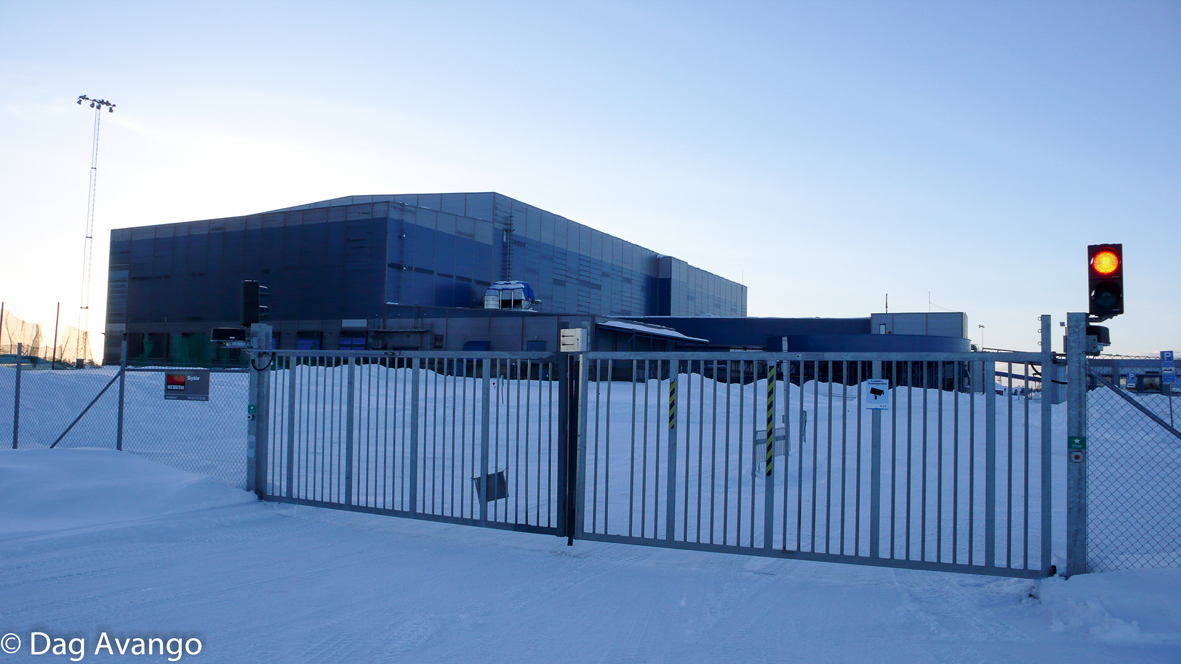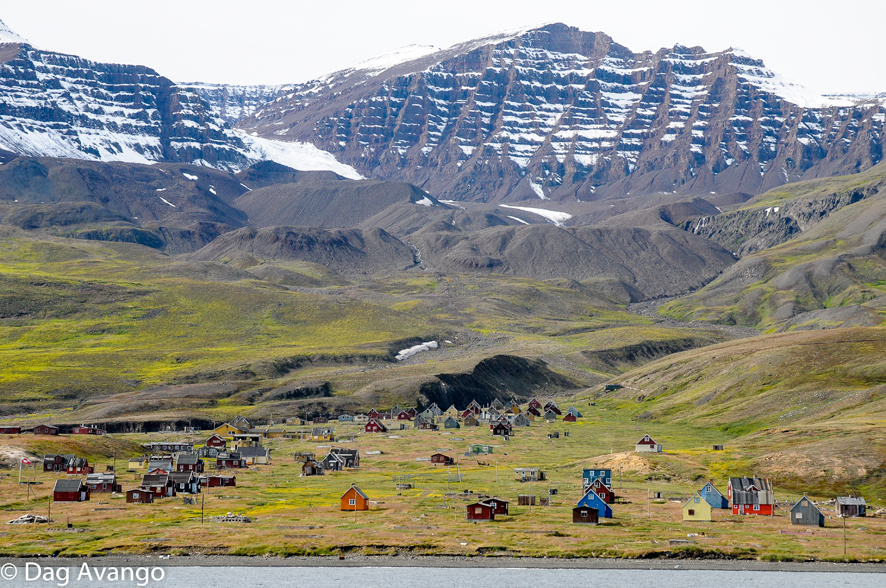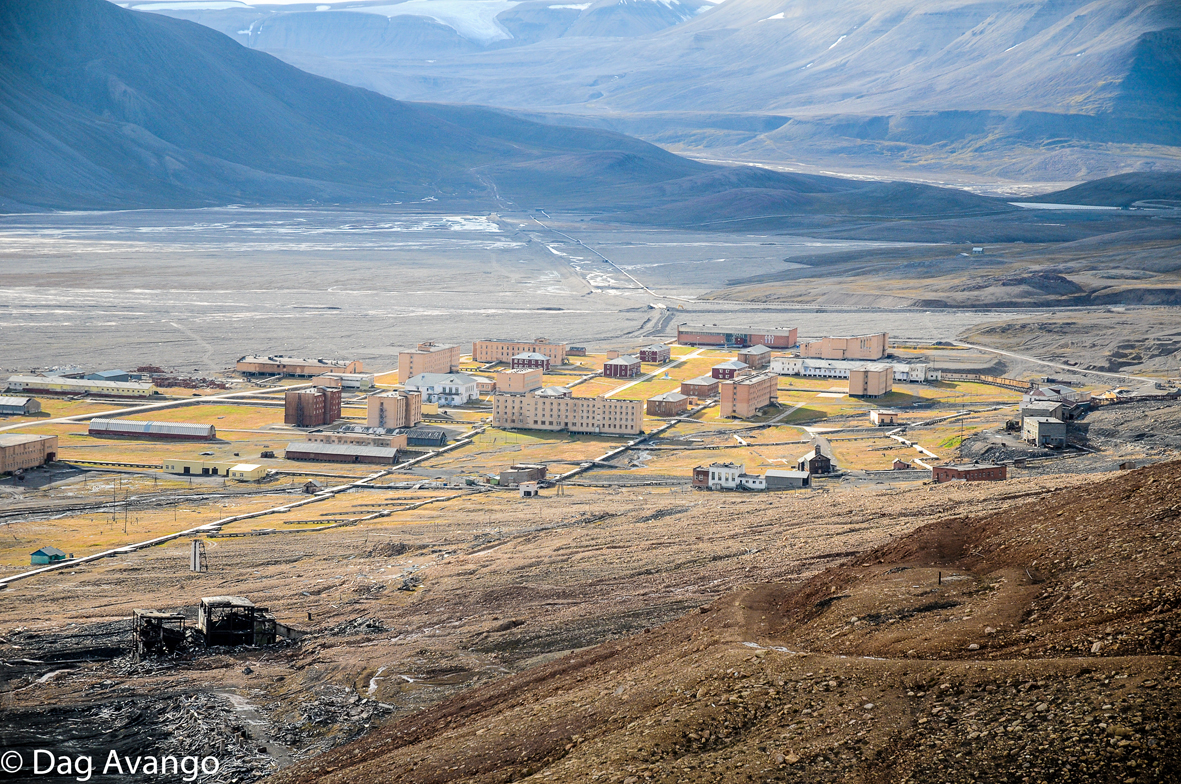Sustainable Communities and the Legacies of Mining in the Nordic Arctic
What are the effects of mining on societies and local environments in the Arctic? Which of these effects will persist even after the end of operations? Under what circumstances can communities built around mining use these legacies as resources for constructing sustainable post-mining futures? These are key questions for the research project Sustainable Communities and the Legacies of Mining in the Nordic Arctic, funded by Nordregio and based at the Division of History of Science, Technology and Environment at KTH Royal Institute of Technology in Stockholm, Sweden.
Objectives and questions
The research project Sustainable Communities and the Legacies of Mining in the Nordic Arctic is conducted in close cooperation with the Mistra Arctic Sustainable Development Program (MASD), funded by Mistra and involving the Division of History at KTH, the Arctic Centre at Umeå University (ARCUM) and other partners in Sweden and elsewhere.
Sustainable Communities and the Legacies of Mining in the Nordic Arctic studies both how and why actors in the Arctic deal with the legacies of mining, with the objective to provide new knowledge concerning how de-industrializing communities dependent on resource extraction can chart new paths to the future, building on the legacies of the past.
The point of departure for the project is the recent business cycle in the global mining industry, starting with a boom in the mid 2000s and peaking in 2012. Increasing demands for base metals in east Asia and high world market prices drove heavy investments in prospecting and mining. From 2014 prices for base metals started to fall, leading to a declining interest in exploration and mine closures. This development holds substantial relevance to the future of many Arctic communities, from employment opportunities and visions of a prosperous future to heavy economic losses, abandoned infrastructures, production facilities and radically altered landscapes. Debates on possible post-industrial futures have thus attained ever more urgency.

The booms and busts of mining – past, present, and future – inevitably produce material as well as social, cultural, and economic legacies. What are the effects of mining on societies and local environments? Which of these effects will persist even after the end of operations? And most importantly for this project, how can communities built around mining use these legacies as resources for constructing sustainable post-mining futures? Attitudes to abandoned mining sites differ across the Arctic. In some cases they have been perceived as unwanted legacies of problematic pasts, making land reclamation a preferred strategy. But in other cases abandoned mines and associated infrastructures have been re-defined as cultural heritage, and have become anchor points for local identities and even a resource for new economic activity.

The objective of this project is to explain these differences in order to better understand how abandoned large-scale resource extraction sites can be turned into resources for new futures in post-industrial Arctic communities. The focus is on the European Arctic, but with a broader circumpolar comparative perspective. The project considers how different actors interpret and use physical remains of abandoned resource extraction operations, but also which political or regulatory measures may be adopted, drawing upon perspectives from heritage studies, history, human geography, archeology, and anthropology.
The project has three key case studies: Norrbottens malmfält in Sweden, Qullissat in Greenland, and the Isfjorden area at Svalbard.
Case studies
Norrbottens malmfält – Kiruna
Norrbottens malmfält is located in Sápmi, in Norrbotten County, in the northernmost part of Sweden. Actors from the south started mining operations there in already in the 17th century, in Junusuando and Svappavaara. Mining operations on a larger scale were started in Gällivare in the mid 19th century, and in 1900 the mining town Kiruna – which is the focus of our Norrbotten case study – was founded.
Although the Kiruna area had been inhabited by Sámi for thousands of years, the town of Kiruna was a new settlement built solely for the purpose of mining iron ore. Mining has remained the most important industry and is expanding today, despite the falling world market prices for iron ore. This development has produced visions of bright futures, but also controversy. LKAB – the state-owned mining company responsible for the Kiruna mine (and others in Malmfälten) – is relocating much of the town’s commercial and residential areas in order to access ore bodies below the current city center. Different actors in Kiruna produce and use history, and historical remains of past mining activities, within the framework of this development and controversy.

The main objective of the case study is to understand the role of mining history and heritage in narratives of history in the Norrbotten (in particular Kiruna) area, and to explore how such narratives provide resources for envisioning sustainable futures for the community. How can the mining heritage at Kiruna and elsewhere in the region be used as a resource for new futures and why? Researchers within the project conducted field research at Kiruna, Gällivare and Pajala municipalities in 2014 and 2015. To learn more about this fieldwork, click on the link here .
The results from the field research in the Norrbotten areas are currently in preparation, both in the form of a comprehensive report and in the form of articles for peer-reviewed international journals. Our research has shown that LKAB uses and produces history and actively engages with the material legacies of its mining operations as cultural heritage, as a tool to build the future the company desires, emphasizing objects, themes and events that work in favor of those future visions. Other actors such as the regional government of Norrbotten, the municipalities, and the tourism industry engage with the legacies of mining with a focus on similar narratives, although with different objectives. Sami communities engage with the legacies of mining in a different way, emphasizing its impact on Sami culture and the reindeer herding economy. From these different angles however, most actors view the imprints of mining as an anchor point for narratives about the past and visions about the future and therefore as a valuable resource, worthy of preservation.
Qullissat
The Qullissat case provides a context that is significantly different from Malmfälten. Located at Disko Island, not far from Ilulissat in western Greenland, this settlement was founded in 1924 under the auspices of the Danish state. As in the Kiruna case, indigenous Greenlanders had used the area before the mine was established. From the late 1930’s the mining company employed both Greenlanders and workers from the Scandinavian mainland and beyond. In 1972 the mine was closed, but unlike many de-industrialized mining towns in mainland Europe, the entire population of was evacuated, putting an end to one of the largest settlements in all of Greenland at the time.

There are several abandoned mining sites at Greenland, but Qullissat is unique because of the active role that indigenous Greenlanders have taken in constructing the abandoned town as a heritage site, even as planners, heritage authorities and the tourism industry have shown little interest in constructing the site as heritage, and there is no mining company promoting itself using its history. The material remains of the town and its mine have become resources for political activism – particularly during the years leading up to Greenlandic Home Rule in 1979 – in addition to enabling a small community to continue to live at the settlement during the summer months.
The objective of this case study is to understand the role of Qullissat – the abandoned site and its history – for different actors in present day Greenland. Which meanings and values does it have for the community of Greenlanders who used to live and work there, for entrepreneurs within the tourism industry, and for policy makers at local and national levels? The multiple meanings of Qullissat are particularly interesting because they challenge notions of Greenlandic identity as tied to the harvesting of living resources. With mining becoming an important component of debates about Greenland’s future – and increasingly tied to debates over the relationship between mining and Greenlandic identity – Qullissat provides a unique and invaluable window into the relations between indigenous Greenlanders and the construction of economic and social futures.
The project conducted field research at Qullissat and Ilulissat in August 2015. To learn more about this fieldwork campaign, read more here . Our preliminary conclusions from the Qullissat phase of this project confirm that despite a growing interest in Qullissat as an industrial heritage site among researchers and heritage practitioners, planning and heritage authorities and tourism organizations generally do not view Qullissat as a cultural heritage site and do not make it a part of their future visions for Greenland. At the same time, actors within the diaspora community in the Ilulissat area have taken another view and independently begun to re-use Qullissat as a site of memory, some visiting the site irregularly and for short periods of time while others spend the entire summer there.
Our field research also gave a number of surprising results. While the grand narrative of the town today is that of “the town that refused to die”, the material culture of the site also supports a different narrative. Our documentation reveals that only a few of the houses at the site are being re-used. The vast majority of the buildings are in fact empty and in different states of decay. Other buildings were damaged or destroyed by a tsunami in the year 2000. The practice of diaspora revisiting the site is also a rather recent phenomenon, beginning in the 1980s. Qullissat did indeed die in 1972 and for a number of years the site remained abandoned until different actors began to reuse the settlement. The first actors to do so were associated with the Aasivik youth events, linked to the left-wing Inuit Ataqatigiit party, for whom the injustice and trauma associated with the evacuated settlement formed an auspicious setting for inspiring political action. The political use of Qullissat is also present today, as the July 2015 visit by Queen Margrethe of Denmark.
The fieldwork of the Qullissat phase of the project will be published first in a substantial report in early 2016 and later in the form of articles in peer-reviewed international journals.
Isfjorden, Svalbard
Unlike Norrbotten and Qullissat, Svalbard has no indigenous population. Companies from Europe and North America established the first settlements there in the early 20th century, for the sole purpose of extracting energy resources for north European markets. A few of those communities persist into the present, while most remain as abandoned ghost towns on an archipelago which Norway wish to protect as the last wilderness of Europe.
Under the provision of the Spitsbergen treaty of 1920, two companies have dominated the mining industry at Svalbard – the Norwegian Store Norske Spitsbergen Kulkompani A/S (SNSK) and the Russian Trust Arktikugol. SNSK is headquartered in Longyearbyen, the most populous town on Svalbard at over 2,300 residents and center of the Norwegian administration. SNSK also runs the mining settlement Sveagruvan. The base for Trust Arktikugol is Barentsburg, but the company also controls the closed mining settlements of Pyramiden, Grumant City and Coles Bay. Longyearbyen, originally a company town, has today been re-developed to resemble an ordinary Norwegian municipality. Although still dependent on SNSK’s mining operations, Norwegian authorities have successfully diversified the towns economic base with a growing tourism industry, education and research. The Trust Arktikugol have drawn up similar plans to diversify the economies in the Russian mining settlements. A prominent feature of this re-development of abandoned mining towns is their re-designation as industrial heritage.

The objective of the Isfjorden case study at Svalbard is to explore the role of material and immaterial legacies of mining there in the strategies and future visions of the main actors at Svalbard – the mining companies, the Norwegian authorities, the tourism industry, the scientific communities and the Norwegian authorities. The Svalbard case provides valuable comparative cases with Kiruna and Qullissat. Preliminary research conducted by Avango show that remains of mining is viewed as a great resource for actors at Svalbard. How is that different or similar to Qullissat and why? Under which circumstances can Arctic resource communities use the history and heritage of past mining operations as a resource to build new futures?
We plan to conduct field research at Svalbard in August 2016. This research will focus on active and abandoned mining towns in the main mining region of the archipelago – Isfjorden – including but not limited to the settlements Longyearbyen, Barentsburg and Pyramiden. A preliminary plan for the field work at Isfjorden will be posted here.
